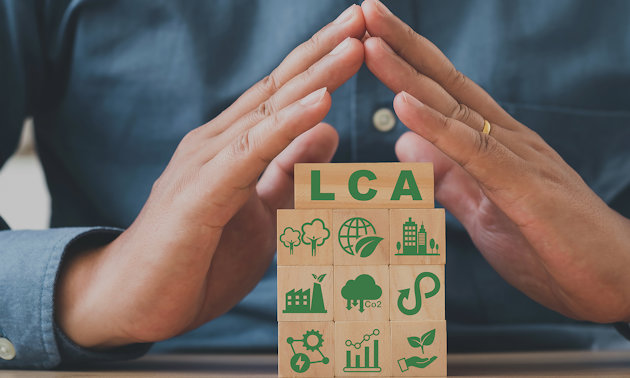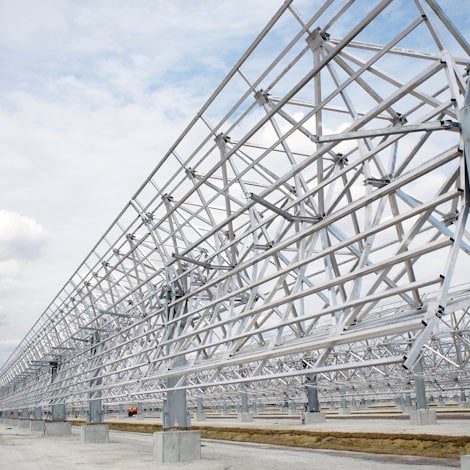Evaluating the value of an LCA
Aluminium products can last for centuries. We recycle, recycle again, then again, and again – you get the picture. And as we evaluate the impact of our aluminium products on the environment, recyclability is vital when documenting the life cycle of our processes and products. But it is only one part of the picture, because a life cycle assessment looks at much more.
When you choose a material for your product, and you want to know about the environmental impact of the material, you should ask your supplier for the analysis of its life cycle. These help you find the most sustainable solution for your design and provide the evidence that support your decision-making process.
LCA is short for life cycle assessment – also called life cycle analysis. The two are interchangeable. An LCA is a standardized and scientific methodology used to document the direct and indirect environmental impacts of a product, or production process, throughout its life, from raw material extraction to the end of its life. And it may be used to support follow-up work designed to improve the environmental performance of the product.
In addition, over the past years, we have seen LCAs becoming crucial to decision-making processes.
Credibility, consistency and transparency through documentation. This is why we carry out LCAs for our products and processes.
LCA gaining traction in every industry segment
Today, when regarding our customers, the automotive industry is most advanced in LCAs, with the building and construction industry right behind.
The LCA concept was originally developed by researchers. Its methodology has changed over the years, perhaps most significantly around 6-7 years ago, when the European Commission communicated its desire to develop an aggregated picture regarding climate change. Today, with sustainability and carbon neutrality gaining more traction in company objectives, LCAs are now widely applied and have become established as the most reliable and consensual methodology used to communicate the environmental performance of a product or a company.
LCAs are regulated by two international standards: ISO 14040 and ISO 14044. However, these standards are now quite ancient, not having been updated since 2006, and they do not seem to totally fulfill the needs of LCA users nowadays, especially concerning environmental communication. The standards are too permissive and allow different possible applications by industry.
In response, the European Commission has spent the last decade working on a unified methodology called Product Environmental Footprint.

Cradle-to-grave impacts in an LCA
What are the key components we examine and document in an LCA? As I mentioned, recyclability is one.
With aluminium products, our LCAs normally examine cradle-to-grave impacts. The more detail you require, the more complete your analysis needs to be. Related assessments include Environmental Product Declarations (EPDs), which are terrific for product comparisons.
Our LCAs normally cover these areas:
- Raw material extraction
- Product manufacturing
- Distribution
- Use
- Disposal/recycling
My employer is now working on LCAs for our plants. For these, we examine the aluminium – including low-carbon products – and the processes, such as extruding, machining and anodizing.
Here is an example: With regard to the carbon footprint of a worldwide average aluminium product, the relative contribution of such processes is not significant. The average carbon footprint of extrusion in Europe is 0.68 kg CO2e/kg Al, while the aluminium billet itself presents a carbon footprint of 8.6 kg CO2e/kg Al, meaning that the extrusion process in itself accounts for only 7% of the impact.
But when low-carbon aluminium is used, the picture is not the same.
When using a Hydro CIRCAL profile (carbon footprint of 2.3 kg CO2e/kg Al), the extrusion process alone accounts for almost 25% and is therefore not marginal anymore. The same rationale can be done for machining and treatment surface processes. I find this interesting.
Carbon footprint is only one element
Yes, carbon footprint. We hear a lot about carbon footprints these days.
Low-carbon aluminium products have become quite popular, and the sky is the limit with these. As they should. But some customers are focusing solely on the carbon footprint of their products, and I’m not sure this is a great thing, because this is only one part – one indicator – within an LCA.
Indeed, an LCA provides tons of other crucial information to limit and reduce the impacts of human activities on the environment. An LCA also assess the acidification, eutrophication and resource depletion potential impacts associated to a product.
In total, around 16 indicators can be evaluated in one LCA. Focusing on climate change only might lead to inadequate decisions by increasing the impacts in the other categories for instance. It’s a phenomenon called a pollution transfer, and LCA practitioners need to be vigilant about it.
Finally, let me conclude by saying that an LCA is not only about environment. Life cycle thinking can be applied to the other sustainable development pillars, too, such as Social and Economy, respectively, with Social Life Cycle Assessments and Life Cycle Costing.
Assessing these three perspectives simultaneously leads to a Life Cycle Sustainability Assessment, where you have in mind the development of products that respect each of the categories. Point being that we can and should go further than just the environment and climate factors.
The whole picture is better, for you and for me. It’s important for our future.








